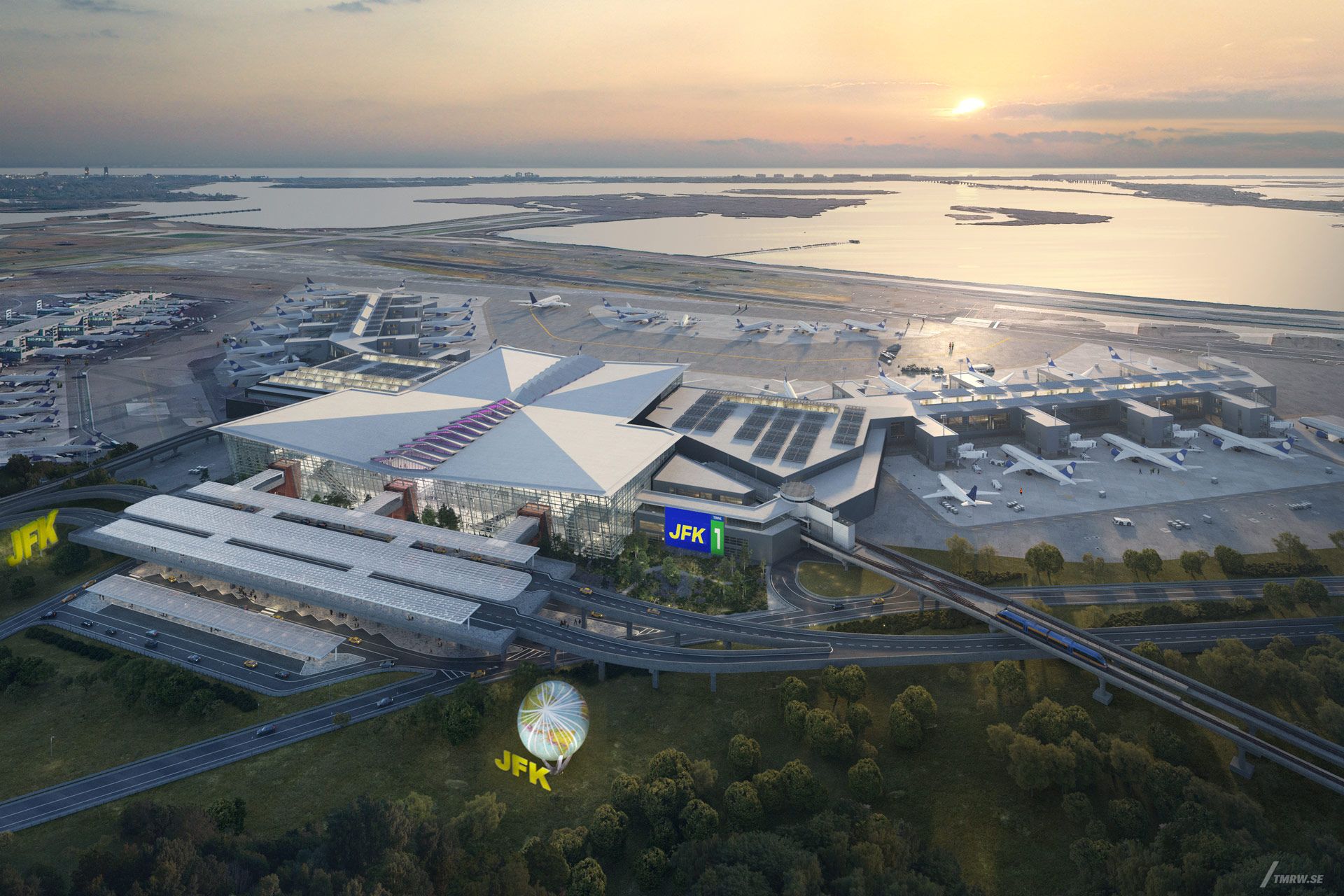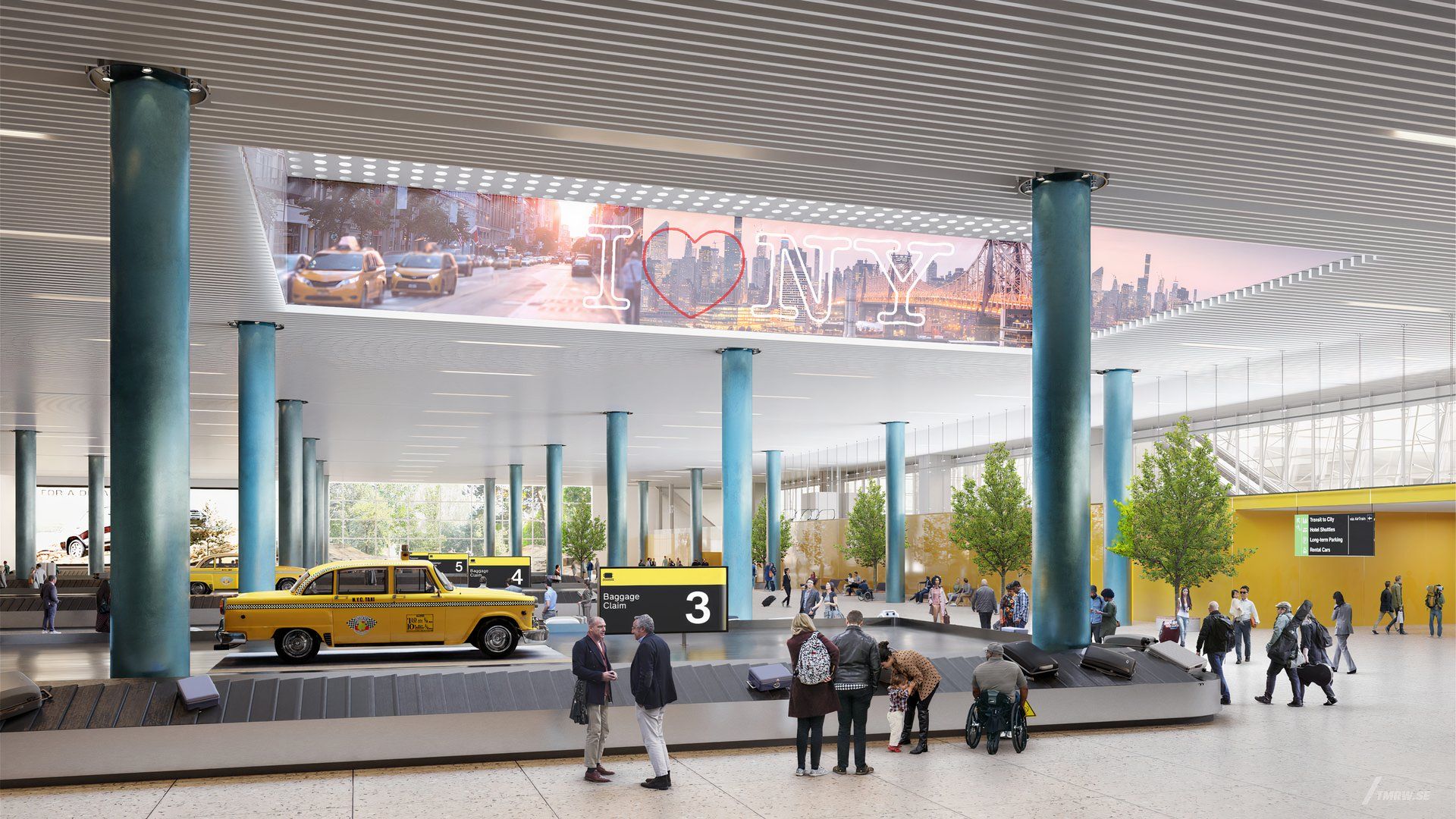Summary
- The New Terminal One at JFK, set to open in 2026, is an ambitious $9.5 billion project.
- Overcoming construction challenges, aligning stakeholders, and focusing on next-gen passenger benefits are key.
- The facility will offer green spaces, biometrics, and a low carbon footprint with solar panels.
The plans for the continued modernization of New York’s John F. Kennedy International Airport (JFK) are extensive, and one of the most important projects is the New Terminal One (NTO). This new state-of-the-art facility will become the standard in global airport infrastructure, becoming a modern hub for global travel.
The original plans for the facility called for construction to commence in 2020, with a total investment of $9.5 billion allocated for the project. The COVID-19 pandemic led to a delay in the project’s construction, with the first phase of the process not beginning until a ground-breaking ceremony in September 2022.
Photo: JFK
The facility, which will begin operations in June 2026, is only a few short years away from opening to passengers. The entire terminal is set to open by 2026. In an exclusive interview at the Passenger Terminal Expo 2024 in Frankfurt, Germany, Simple Flying spoke to Simon Gandy, the Chief Operating Officer of The New Terminal One at JFK, the organization developing the new facility.
An ambitious project
The new terminal will be built near the existing Terminal 1 and located near the nearly 60-year-old Terminal 2. The location of the former Terminal 3, which was completely demolished in 2013, is also located nearby. The facility is set to be over 2.4 million square feet in area and will become the major building on the airport’s southern side. Despite being on track for a 2026 opening date, Gandy quickly pointed out some challenges with such an ambitious project.
Photo: JFK
The executive quickly pointed out that building such a new terminal would involve overcoming the construction challenges while ensuring the terminal’s long-term viability. Carriers, the Port Authority of New York and New Jersey, and other stakeholders must all be involved in decisions, and aligning the timelines of all these different groups can be rather challenging. Discussing these challenges, Gandy had the following words to share:
“So what what you’re trying to do is do that balance of we’re only so big, we need to be running at pace we need to be making sure that we’re informing airlines and getting airlines signed up. And of course, airlines have a slightly different lens on the timeframe and urgency than we do.”
Despite these challenges, Gandy quickly relayed his confidence in his team’s ability to complete the project on the current timeline. He also noted the importance of focusing on next-generation features that benefit passengers and airlines alike.

Related
American Airlines And Partners Launch $125 Million Construction At JFK Terminal 8
The project aims to transform the customer experience at the terminal.
A facility unlike any other
According to an analysis from Airport Technology, the new Terminal 1 is set to offer nearly 120,000 square feet of lounge and indoor green spaces, high ceilings, and plentiful natural light. Gandy also discussed new security screening and check-in technology that will significantly reduce the amount of time passengers are waiting around the terminal, stating as follows:
“So I think it’s what we’re able to offer is we are going to have biometrics. You’re gonna make it easy for travelers to basically do the preparation work that they need to through the airline’s website, but when they get here, don’t have to get they might not have to get the documents out but if they do, it will be once and then we’re into biometric world.”
Photo: JFK
The executive later discussed the facility’s new features, which focus on maintaining a low carbon footprint. In the interview, Gandy indicated that over 30,000 solar panels would be placed on the terminal’s roof, with batteries to store any excess energy for later operations.




